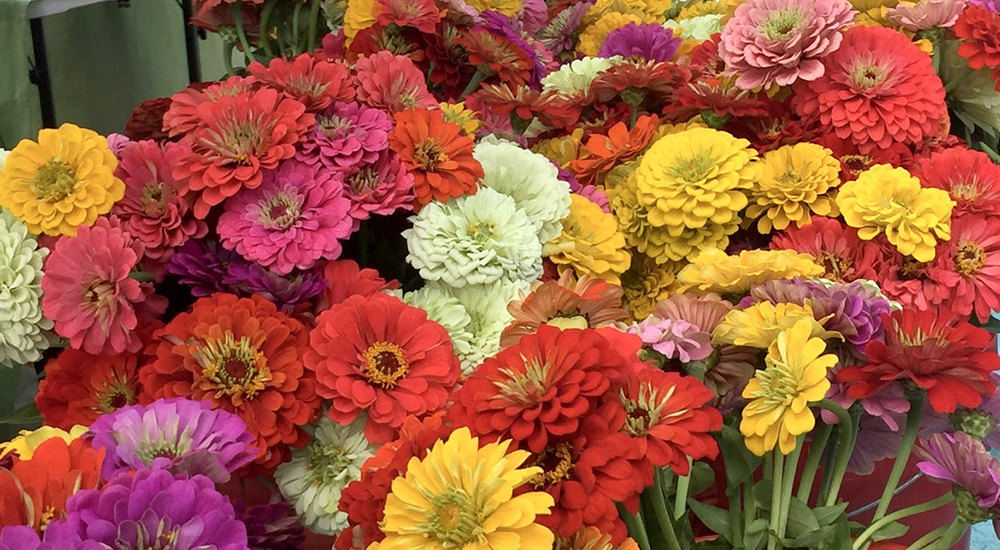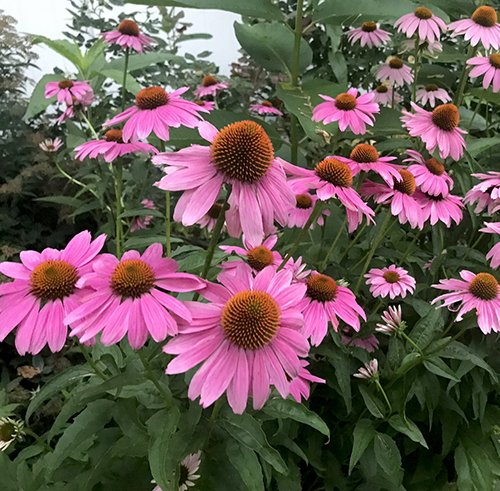Let It Grow
By Tammy Thornton
Those of us living along the Jersey Shore often find ourselves playing host throughout the warmer seasons of the year. Of course, we must feed our hungry guests. What might surprise us is to see them nibbling on our parsley, dill, or fennel. If you find something gnawing away at your herbs, you might be (unknowingly) hosting the caterpillar of our state butterfly, the black swallowtail.
As adult butterflies, black swallowtails will enjoy the nectar of flowering plants such as milkweed, thistle, purple coneflower, or zinnia. After mating, female black swallowtails will be looking for host plants to lay their eggs. Most of us may have heard that monarch caterpillars have only one host plant — milkweed. However, black swallowtail caterpillars are not so picky. They enjoy a variety of herbs in the carrot family including parsley, dill, fennel, celery, caraway, and carrot. Wild plants that serve as host plants include Queen Anne’s lace (in the wild carrot family), wild parsnip, and golden alexander. If you find these little critters on your herbs, prepare to enjoy the wonders of nature that await you and simply plant extra herbs for yourself and them.

Black swallowtails will enjoy the nectar from flowers such as these easy to grow zinnias.
Black swallowtail caterpillars have various defense mechanisms at all different stages of their short lives. At the earliest stage, these caterpillars are black and spiny and have a “white saddle” in the middle, giving them a look that mimics bird droppings to help disguise them from predators. As the older caterpillars change to green and black coloring, we may mistake them for monarch butterfly caterpillars. But to predators, these older black swallowtail caterpillars mimic pipevine swallowtail caterpillars, which are poisonous and distasteful to predators. Swallowtail caterpillars also have a horn-like organ called osmeterium. When threatened, this orange, two-pronged “horn” pops out of the caterpillar and emits a foul-smelling chemical that deters predators. Caterpillars have also been observed flinging their frass (feces) away from them, which is thought to throw off their scent from predators and parasitic insects. In a final defense mechanism, as adult butterflies, black swallowtails mimic the distasteful pipevine swallowtails once again in their coloration, especially when the wings are closed.
Attract black swallowtails to your garden with nectar plants such as purple coneflower and verbena bonariensis (tall verbena). Once you see these beautiful black butterflies with iridescent blue markings enjoying the nectar of plants in your garden, you will eagerly want to share your herbs with the caterpillars. You may just be lucky enough to see all of the clever ways they defend themselves, allowing us to enjoy future generations of butterflies.

Plants flowers such as purple coneflowers and zinnias for adult black swallowtail butterflies and herbs like parsley and dill for their caterpillars.
We love to hear from our readers. If you have story ideas, comments, or questions, kindly send your thoughts to shorelocalgardener@gmail.com.
Tammy Thornton lives with her husband, children, and crazy pets while enjoying a life of gardening, cooking, and going to the beach.











I have been raising black swallowtail here in Michigan for about 5 years now. I have found if you plant dill you will have them in abundance. Plant a LOT, because those babies are hungry. Later in the summer the caterpillars might overwinter, so don’t throw away cocoons that haven’t hatched by the first frost. Put them in a sheltered area (outside) and check daily in the spring. I have only had a butterfly emerge with a deformed wing once, every other butterfly was released happy and healthy. They really are the best butterfly’s, and easy to raise.